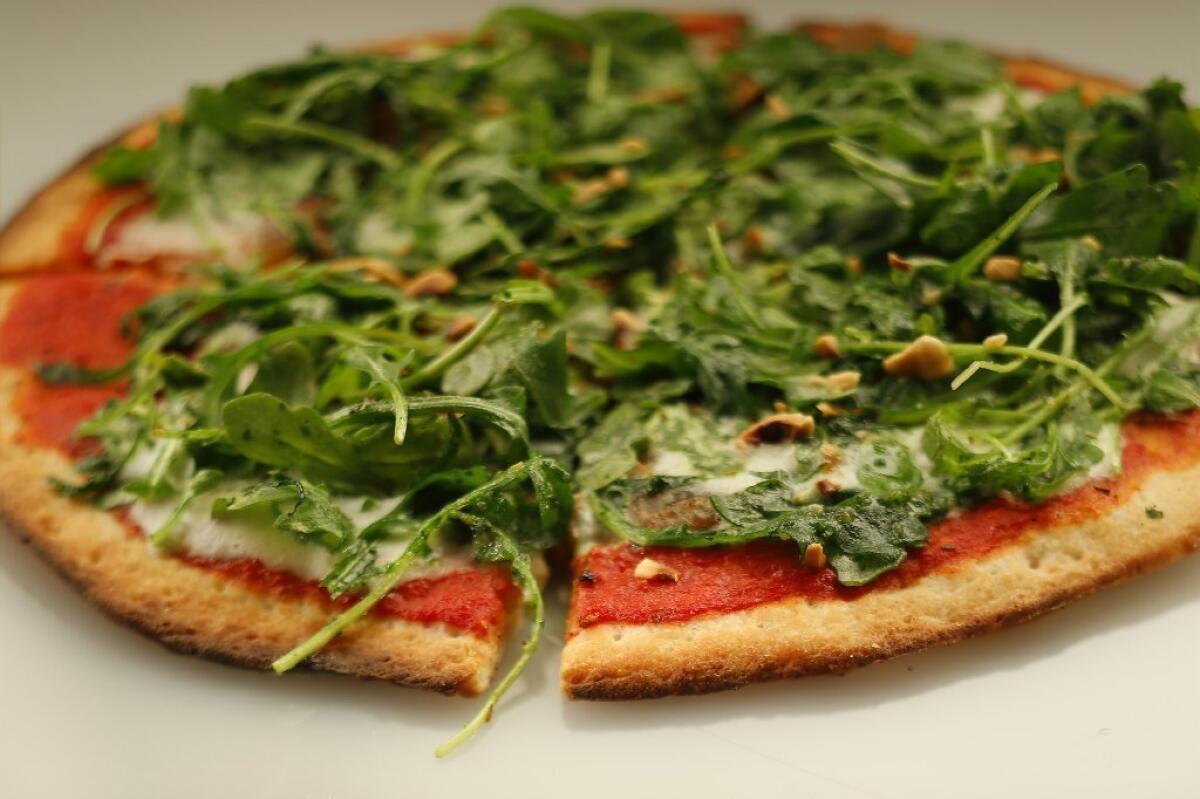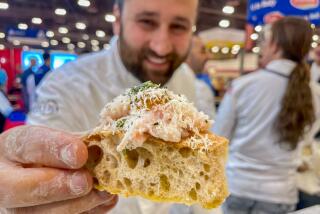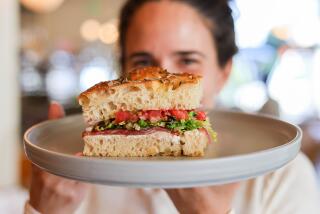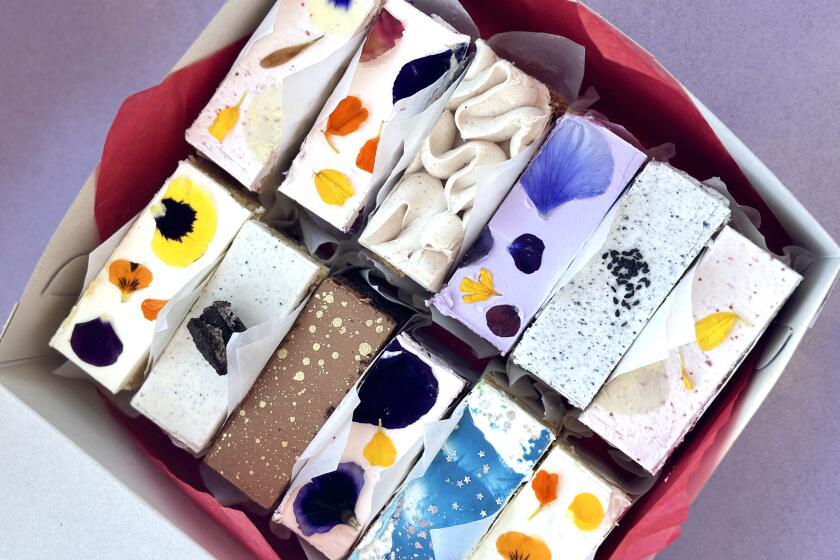Gluten-free pizza on lots of menus, not always for people with celiac

The gluten-free crowd has spoken, and it wants pizza. It’s easy to find gluten-free crusts these days, usually for a small surcharge. What’s more elusive is a pizza that’s suitable for those with celiac disease – people for whom a just a dusting of ambient wheat flour can mean painful illness.
Many pizza chains, including Spin, Fresh Brothers, Pizza Rev, Blaze, Live Basil and L.A.’s own Pitfire, have gluten-free crusts on their menus, though most are not a good bet for people with celiac disease.
“If you are severely allergic, you probably shouldn’t order it,” said Anthony Carron, chef at L.A.’s 800 Degrees Neapolita Pizza, with three locations. “It’s a pizzeria -- there’s flour everywhere.”
California Pizza Kitchen worked with the Gluten Intolerance Group to have its gluten-free pizzas certified. It sets aside blue containers and lids, utensils and plastic gloves for use in making them. They are topped in a separate area of the kitchen. Blue stickers are used on takeout boxes.
PizzaRev said its employees “go to great effort” to keep the gluten-free pizzas as free of gluten as possible, said Jeff Zuckerman, PizzaRev’s chief marketing officer. They’re baked in a separate tin and kept away from wheat crusts. But, like many companies, it offers a disclaimer.
Many people who order gluten-free pizzas don’t have celiac disease.
“I think it’s a combination of things,” Zuckerman said. “There’s no denying that whether it’s an increase in awareness of allergy concerns or an individual health choice, a significant number of people choose a gluten-free crust.”
As Jennifer Harvey, food specialist for MOD Pizza put it: “The gluten-free movement has gotten so big. It’s no longer a niche.”
“It was about customers asking for it,” Harvey said, adding that MOD added gluten-free crusts last July.
Pieology’s gluten-free crust is a mix of rice, tapioca, potato, olive oil, sugar and spices. Carron uses a mix of rice, potato and soy flours made to withstand the high oven heat.
“When I first opened I would sell two or three a day, in the last year it’s just exploded” to close to 50 gluten-free pizzas every day, he said.
Gluten-free crusts tend to be more toward flatbread or crackery crusts. “Without the gluten matrix to hold the carbon dioxide, it just doesn’t rise as much,” Carron said.
Blaze Pizza put gluten-free pies on its menu when it opened in August 2012. The rice flour crusts are made in house, and the dough is fermented for 24 hours, as is the wheat dough.
“We realized that the demographic we’re appealing to may want to eat a gluten-free pizza,” said Jim Mizes, Blaze’s president. “We don’t want to force them to eat a salad” at a pizza restaurant.
Brad Kent, Blaze’s executive chef and owner of Olio Pizzeria in Los Angeles, said 3% to 4% of the pizzas sold are gluten-free. That’s because “the quality of offerings are now good enough that people can actually enjoy something instead of just suffer through it,” Mizes said.
Many of the gluten-free pizzas are made with rice-based crusts; Pizza Studio uses tapioca, said Samit Varma, a founder of the company. Pizza Studio has five crust offerings, also including one that’s whole grain and flax.
Most companies have a modest surcharge – up to $3 -- for a gluten-free crust – because of the low volume and because it’s more expensive to produce, company representatives aid.
Josh Kern, a spokesman for Colorado-based Live Basil, said he’s surprised at the popularity of gluten-free pizzas, around 8% to 10% of what they sell.
“I see a lot of kids having a gluten-free crust. You see a soccer team come in and there’s always three or four kids ordering that,” Kern said.
“We spent a lot of time in the test kitchen,” he said, to make a crust that would work in Live Basil’s 650-degree oven; their crusts, also rice flour based, are made by a Boulder, Colo., bakery.
Also:
Ben & Jerry tries to get us to eat more ice cream
But you might make your own sorbet, tonight, instead
Twitter: @mmacvean
More to Read
Eat your way across L.A.
Get our weekly Tasting Notes newsletter for reviews, news and more.
You may occasionally receive promotional content from the Los Angeles Times.







